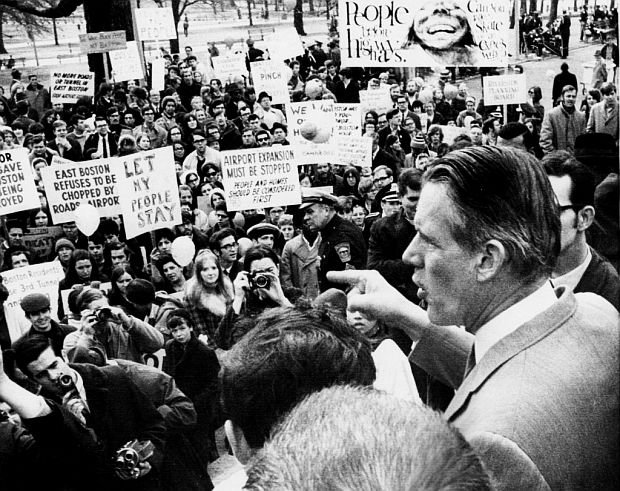The Negative Impact of the Interstate Highway Act
While TV and print advertisements of the 50’s and 60’s romanticized the new Interstate Highway System and the cars that traveled on it, there was a sinister truth hiding just beneath the glossy surface. According to Dept. of Transportation figures, approximately 475,000 homes were destroyed to make way for the new roads causing over 1,000,000 people to be displaced. The sinister aspect of this construction project is not that homes were destroyed and families displaced, collateral damage for an infrastructure project of this size should be expected. However, the problem becomes obvious when you discover exactly who had their homes and families in the path of the bulldozer.
When deciding the path of the Interstates, public officials in Alabama, Tennessee, Florida, and many other states specifically targeted minority and low-income communities. Racist politicians and city planners knew that the emerging civil rights movement would eventually undo their legal segregation policies and zoning laws. Laws can be struck down with the stroke of a pen or the bang of a gavel, but roads and bridges cannot be torn down so easily, and public officials knew this. They used phrases like “urban renewal” and “slum clearance” to make their bigoted intentions sound palatable and socially acceptable.
In Birmingham, AL Interstates 59 and 65 were built almost exactly along racial segregations lines taken from 1920’s zoning maps. The northern part of Nashville, TN was home to about 80% of all Black-owned businesses in the city. Most of these businesses were demolished when the highway came through. In 1936, the Dade County Planning Board proposed a “negro resettlement plan, calling for the city of Miami to remove the residents of Overtown and resettle them on the agricultural fringes of Miami. Then, in a 1937 speech to the Miami Realty Board, George Merrick, a prominent local developer, proposed “a complete slum clearance effectively removing every negro family from the present city limits.” This plan never materialized… until the late 1950’s when I-95 consumed forty square blocks and displaced over 10,000 people in Overtown. If the highways couldn’t go right through minority communities, they would encircle or cut them off from the rest of the city.
Eminent Domain, which is the right of the federal government to purchase private property for public use, was used to snatch up land for the highway. Pay outs for houses were notoriously low and no relocation assistance was offered initially. This was combined with the practice of Redlining, which is when banks refused to lend to people who lived in certain areas due to a perceived higher risk of defaulting on the loan. These areas were indicated by red shading on the bank’s map, and typically indicated low-income and minority neighborhoods. These factors made it extremely difficult for Black and other low-income families to relocate easily to desirable neighborhoods. About 90% of low-income housing that was destroyed to make way for the Interstates was not replaced.
Although time has given us better perspective on the damage the Interstate system has caused, there was resistance from the public at the time. Invasive roads were not just an American problem either, “Highway Revolt” protests took place in countries around the world for many different reasons. Some people wanted to protect parks and natural areas, some people thought the money should be invested in public transit like buses and subways. The pictures you see nearby show some of the signs people made for the protests.
The Interstate Highway System is a marvel of engineering and almost literally holds the country together by allowing the easy flow of goods and people from coast to coast. It is certainly one of the most crucial components of everyday life in America. However, it is important not to look at the Interstate System and brush off its demerits with platitudes like “the good outweighs the bad”. The roads and bridges that were built over 50 years ago are now crumbling, and it is important that we don’t repeat history when rebuilding them.
Sources:
Deborah N. Archer, "White Men's Roads through Black Men's Homes": Advancing Racial Equity through Highway Reconstruction, 73 Vanderbilt Law Review 1259 (2020)
Karas, David, Highway to Inequity: The Disparate Impact of the Interstate Highway System on Poor and Minority Communities in American Cities, University of Delaware, New Visions for Public Affairs Vol. 7 (April 2015)
Links:
White Men’s Roads through Black Men’s Homes – Deborah N. Archer




